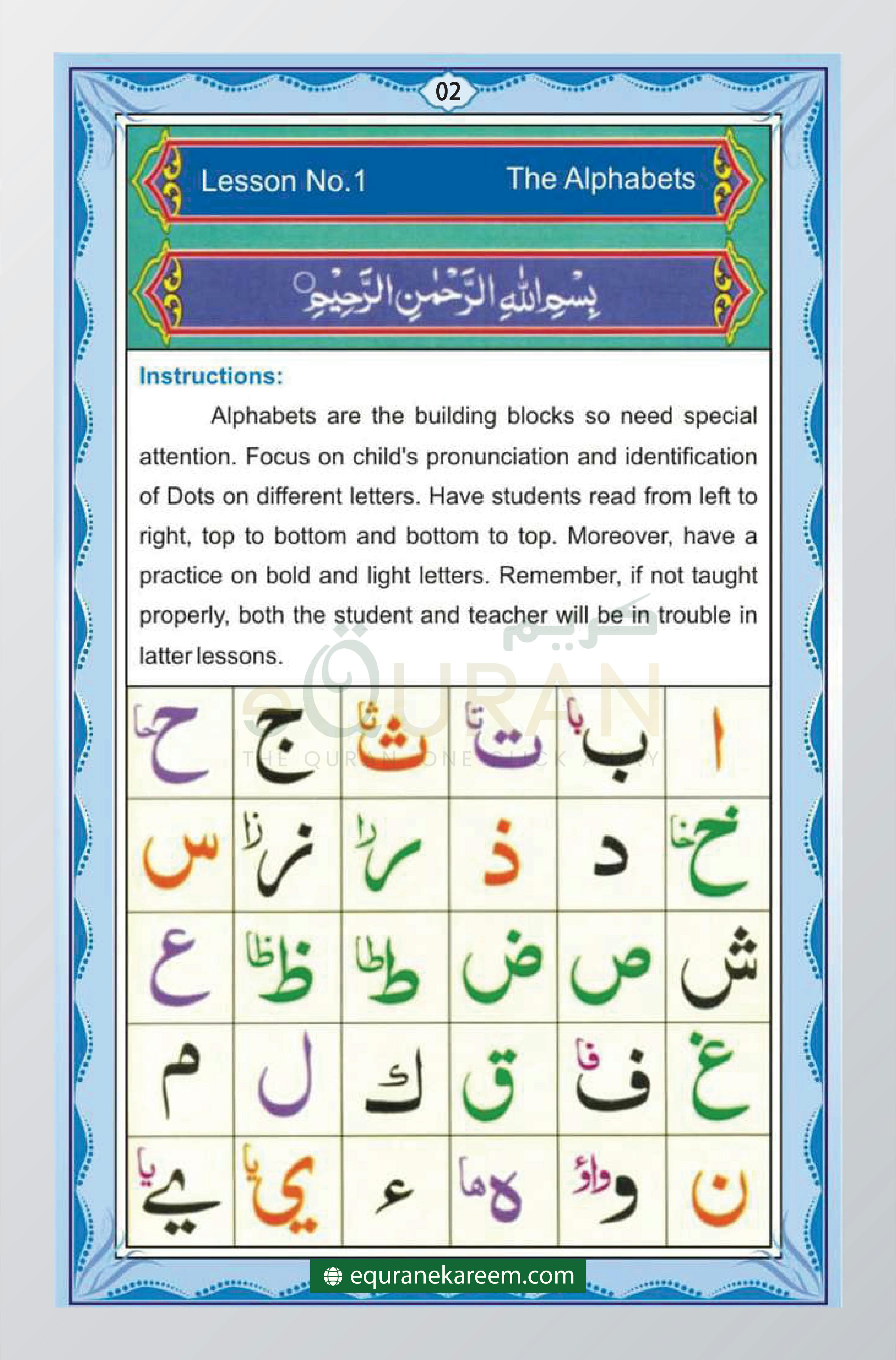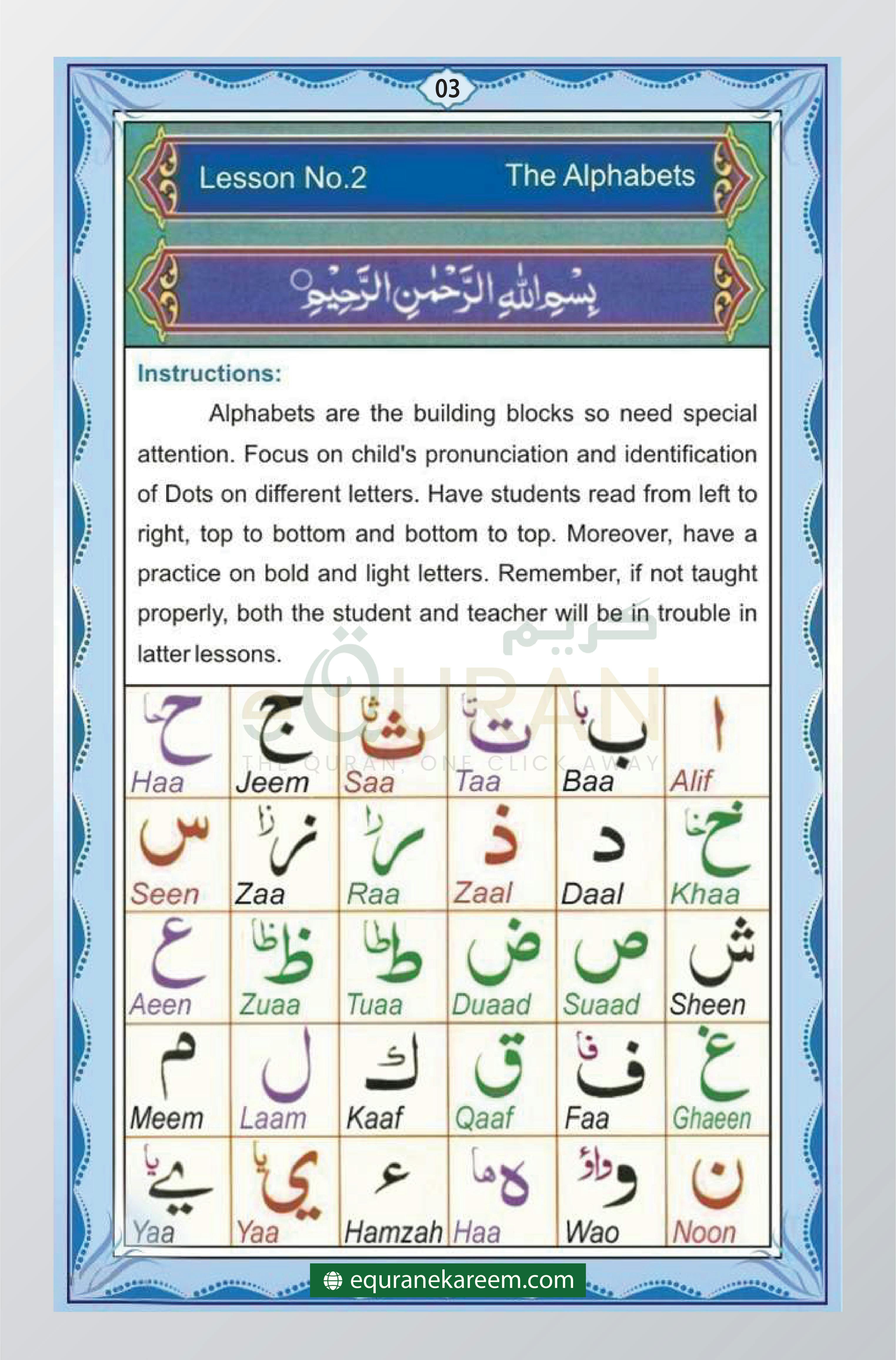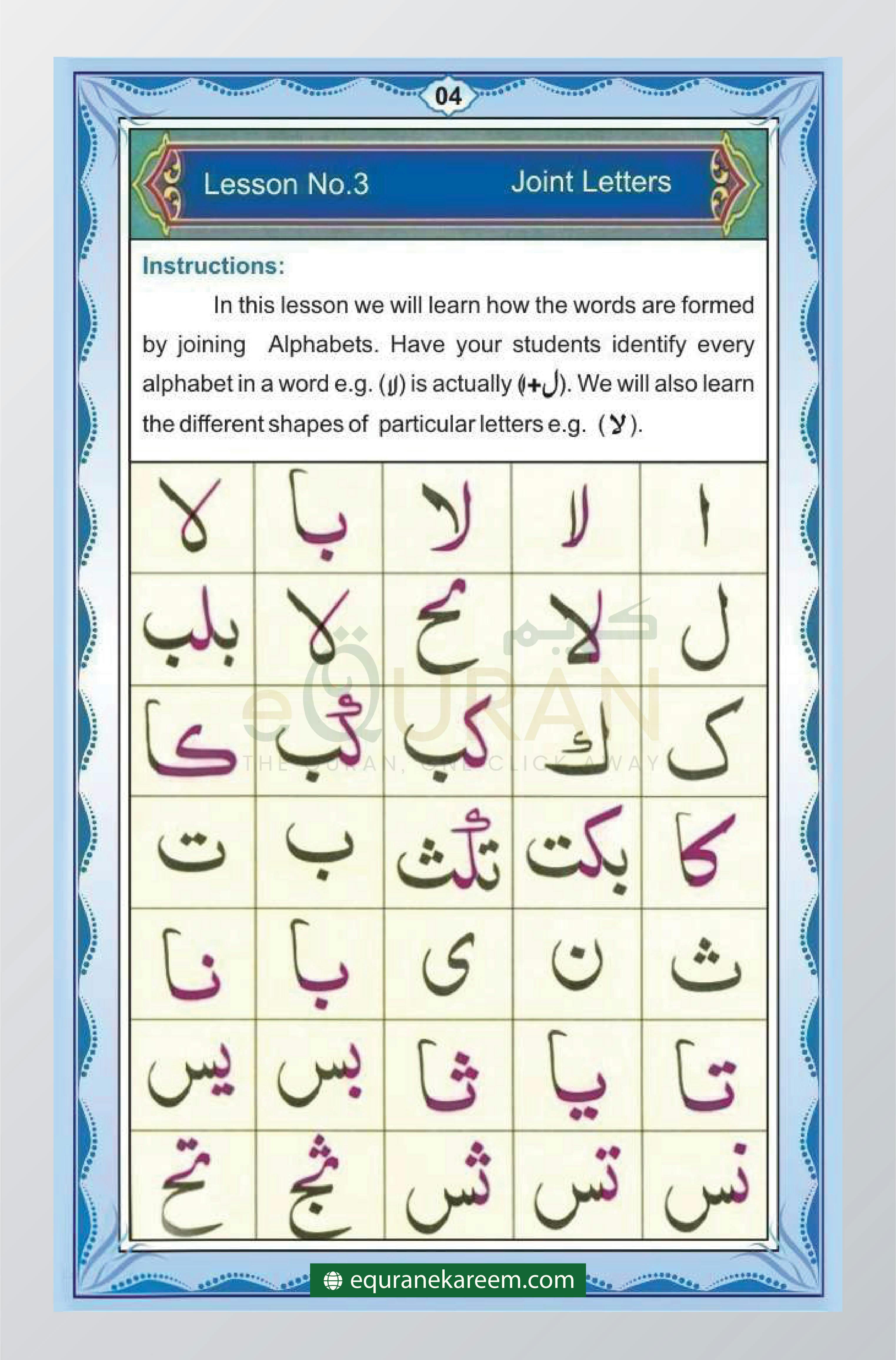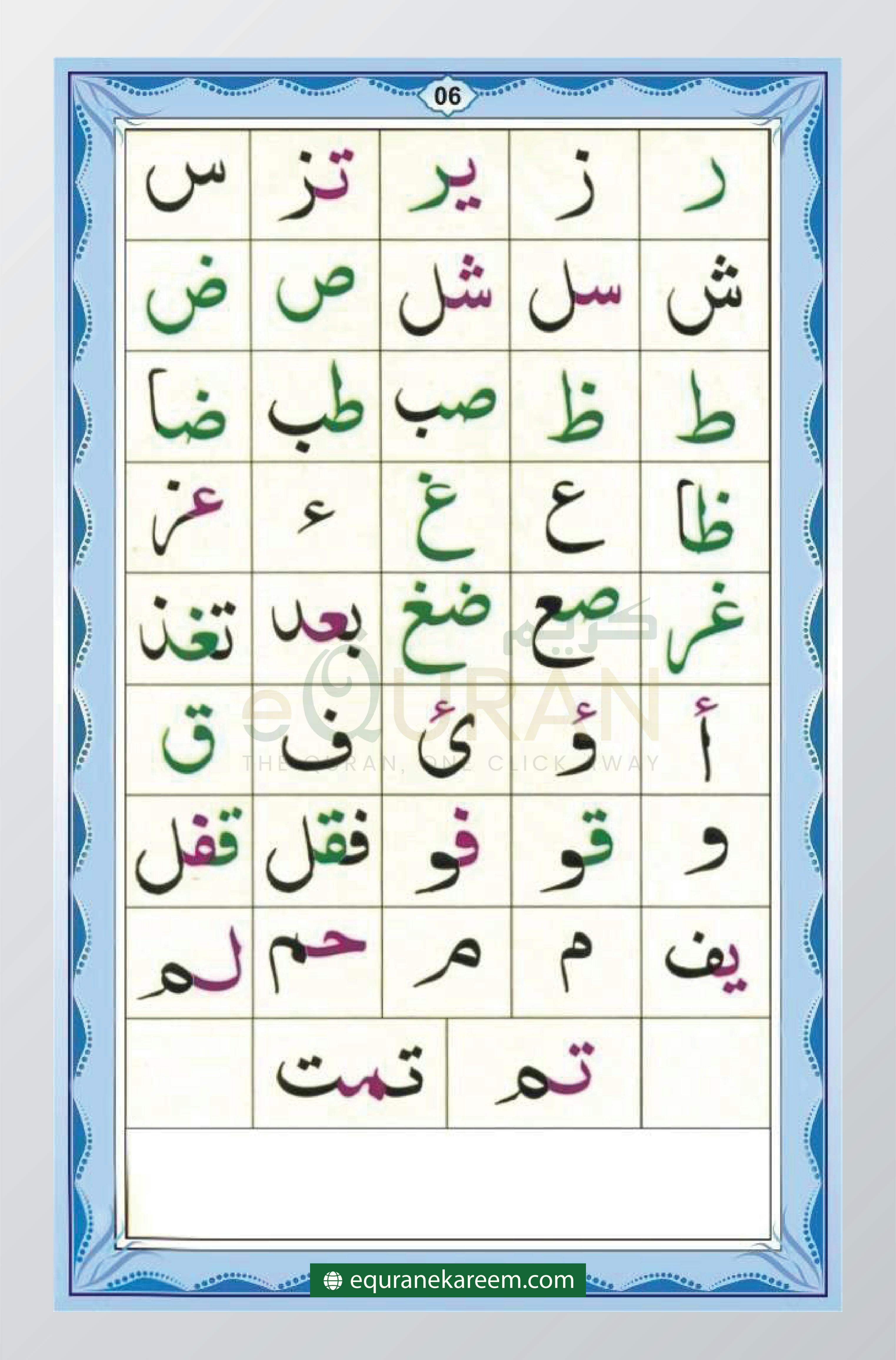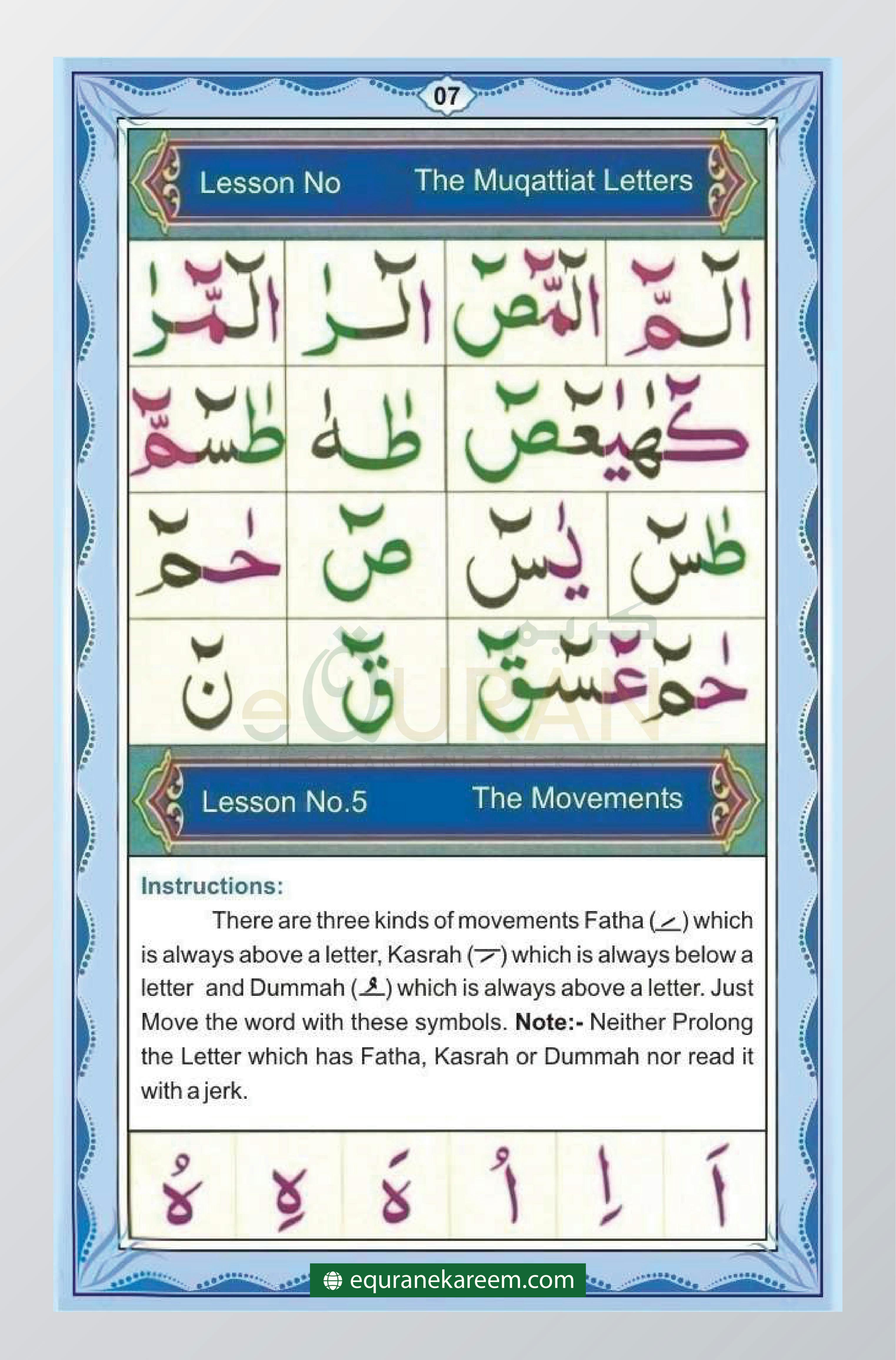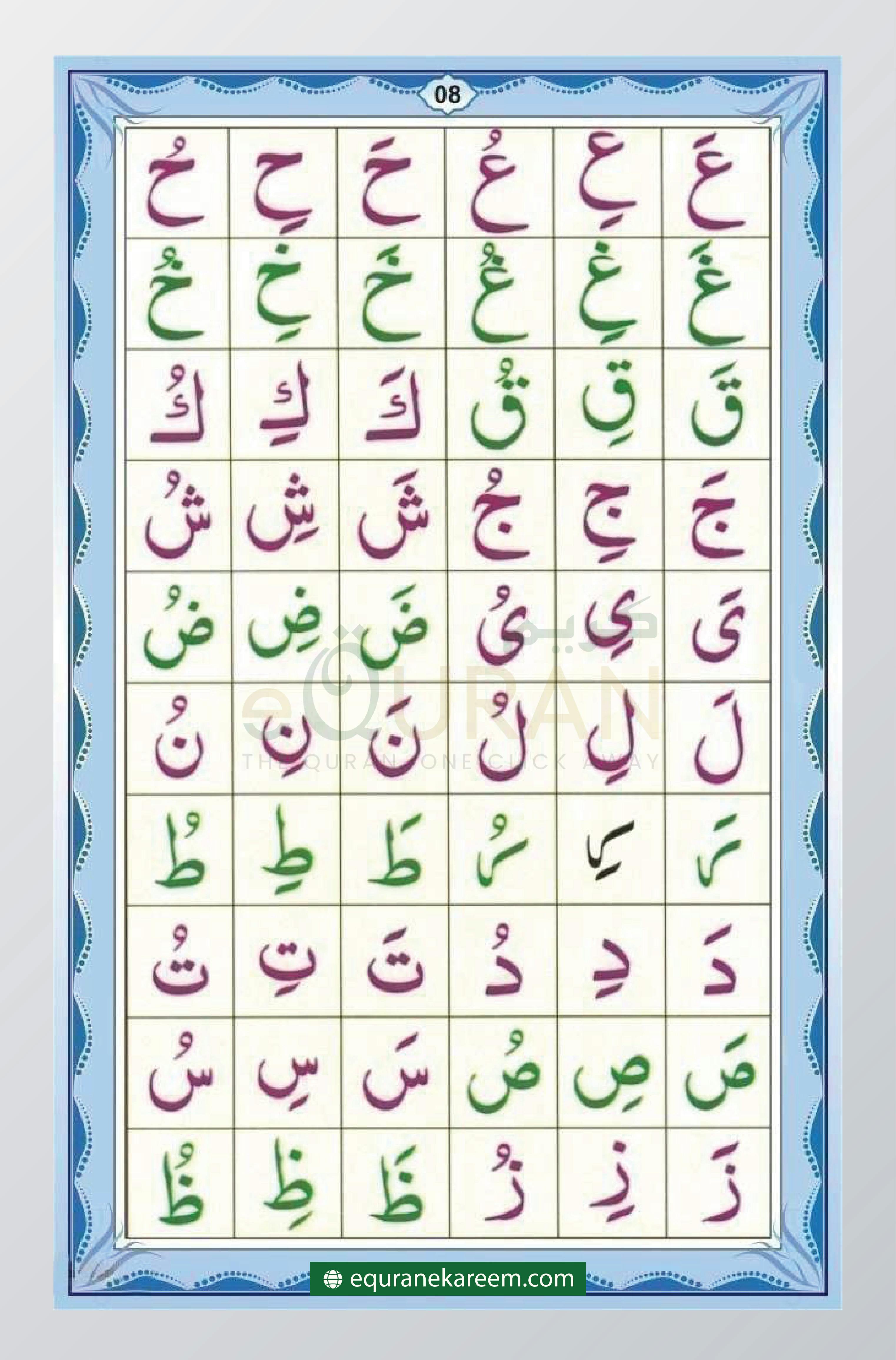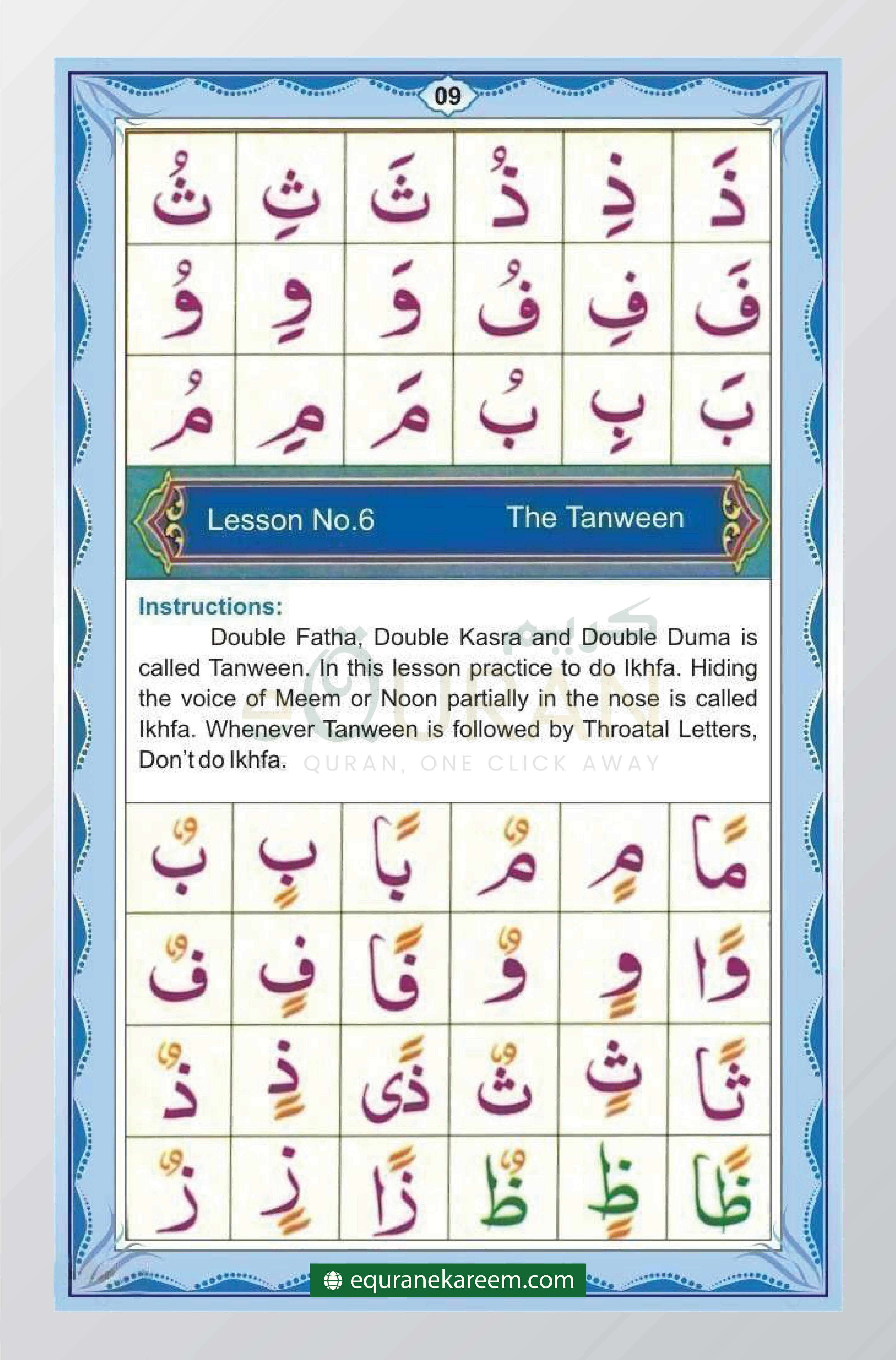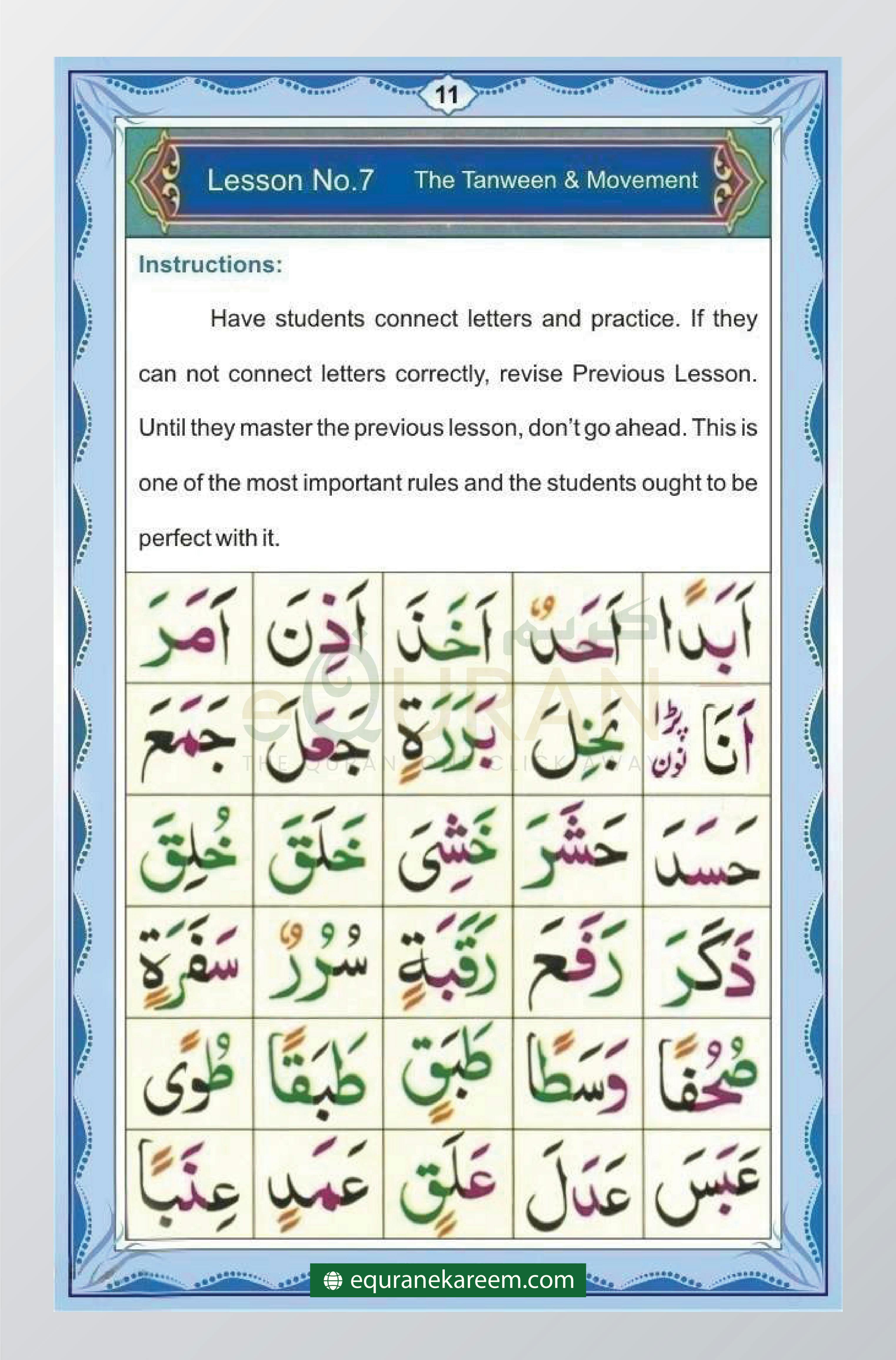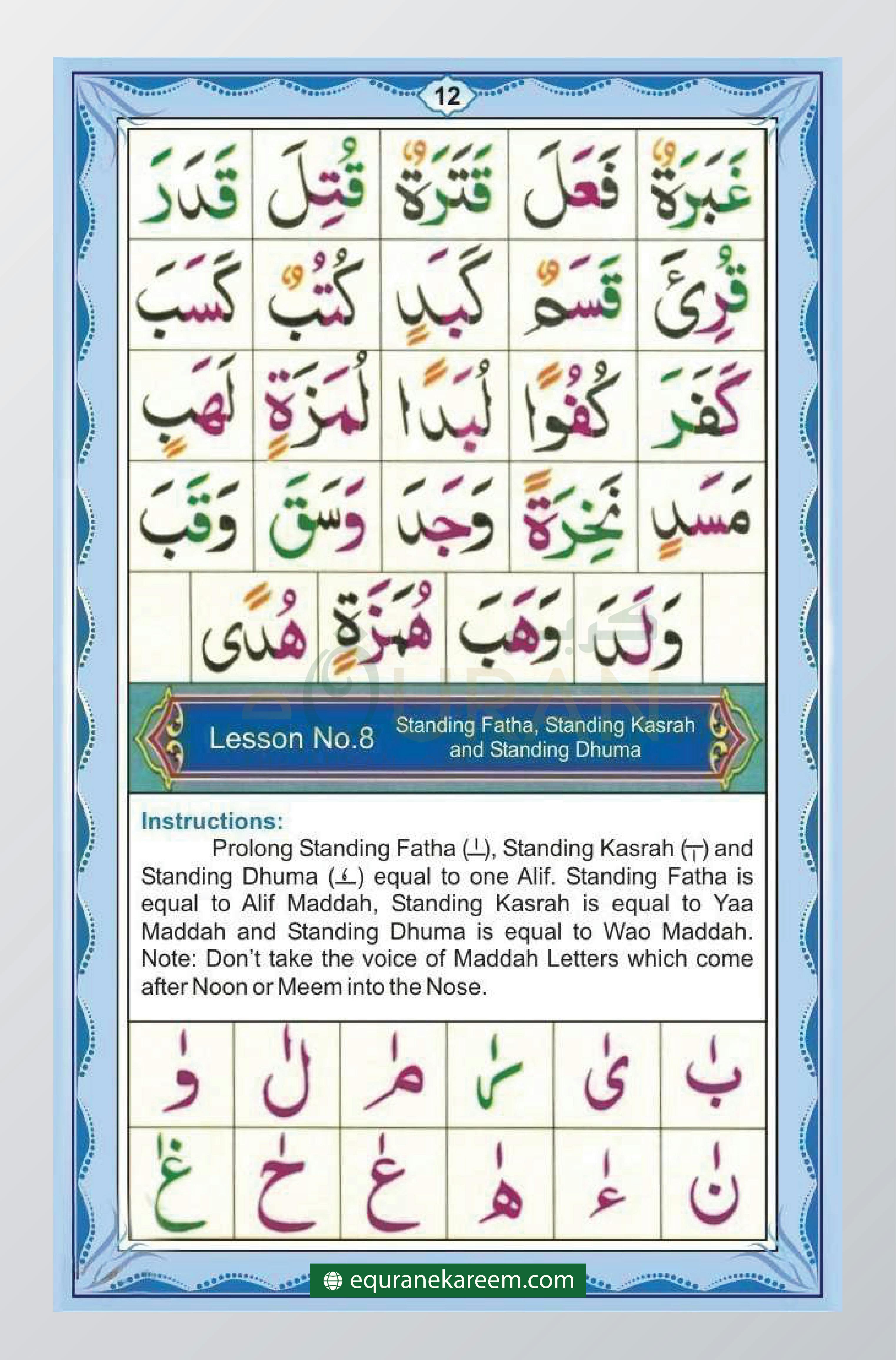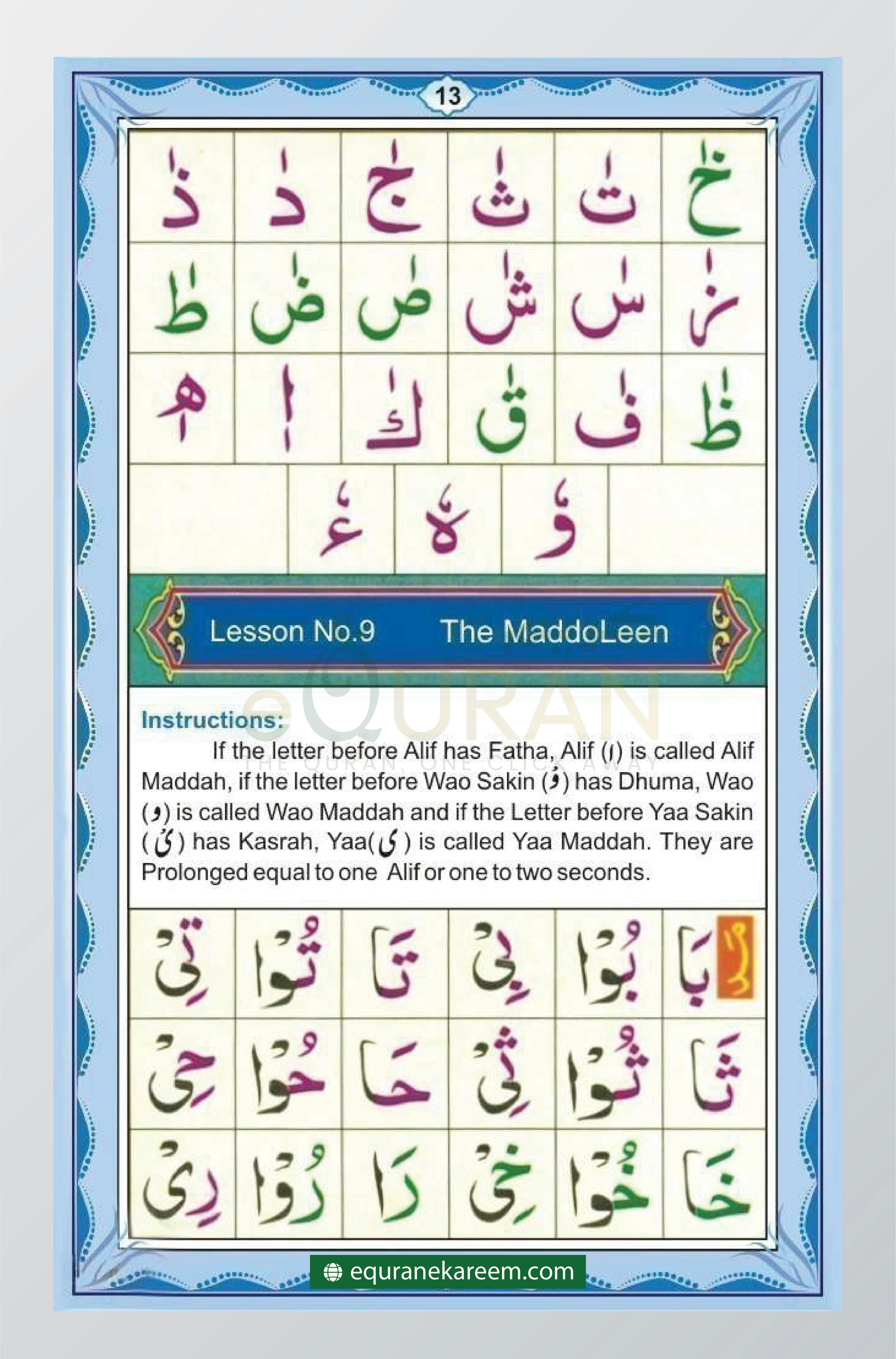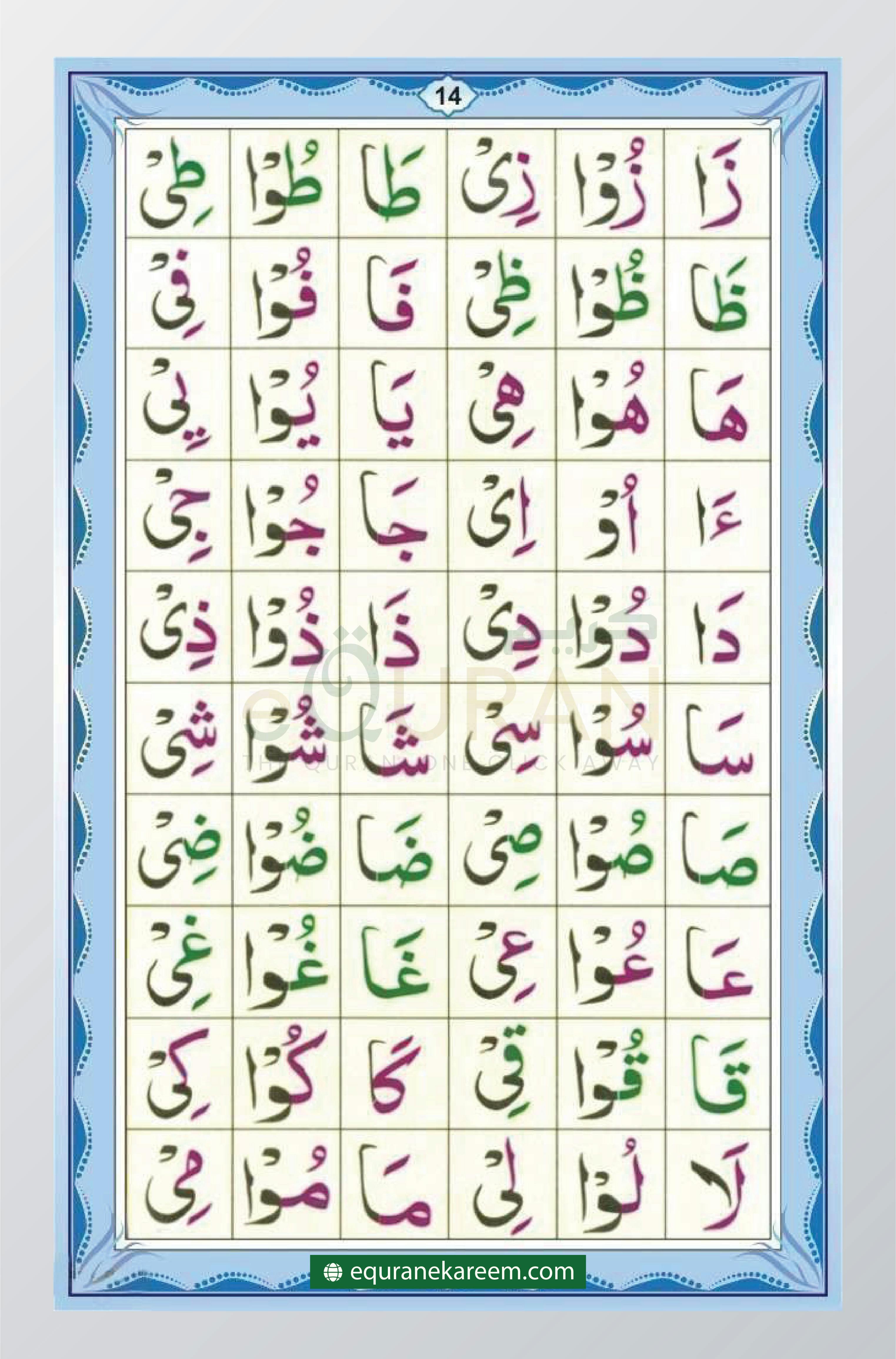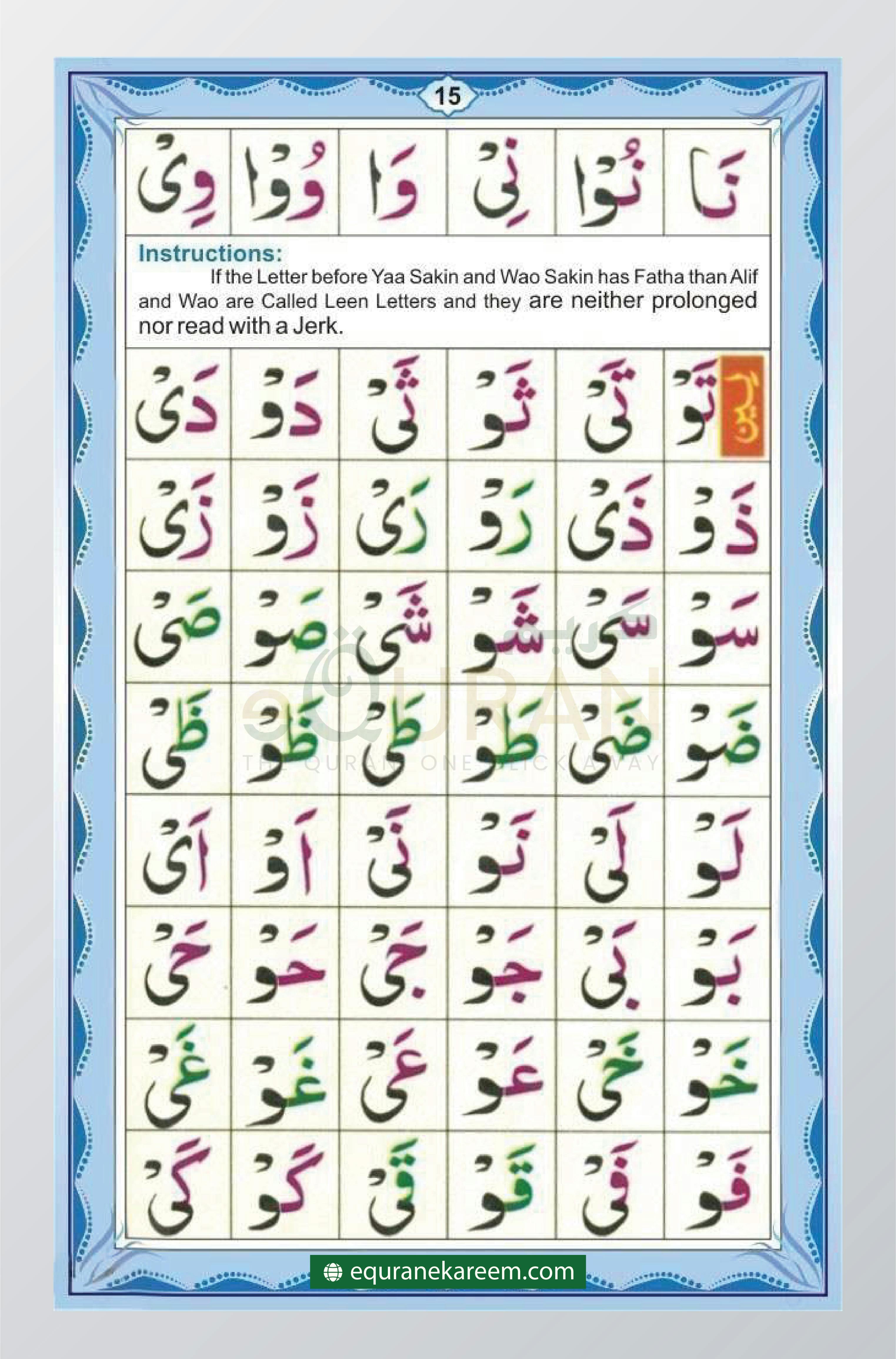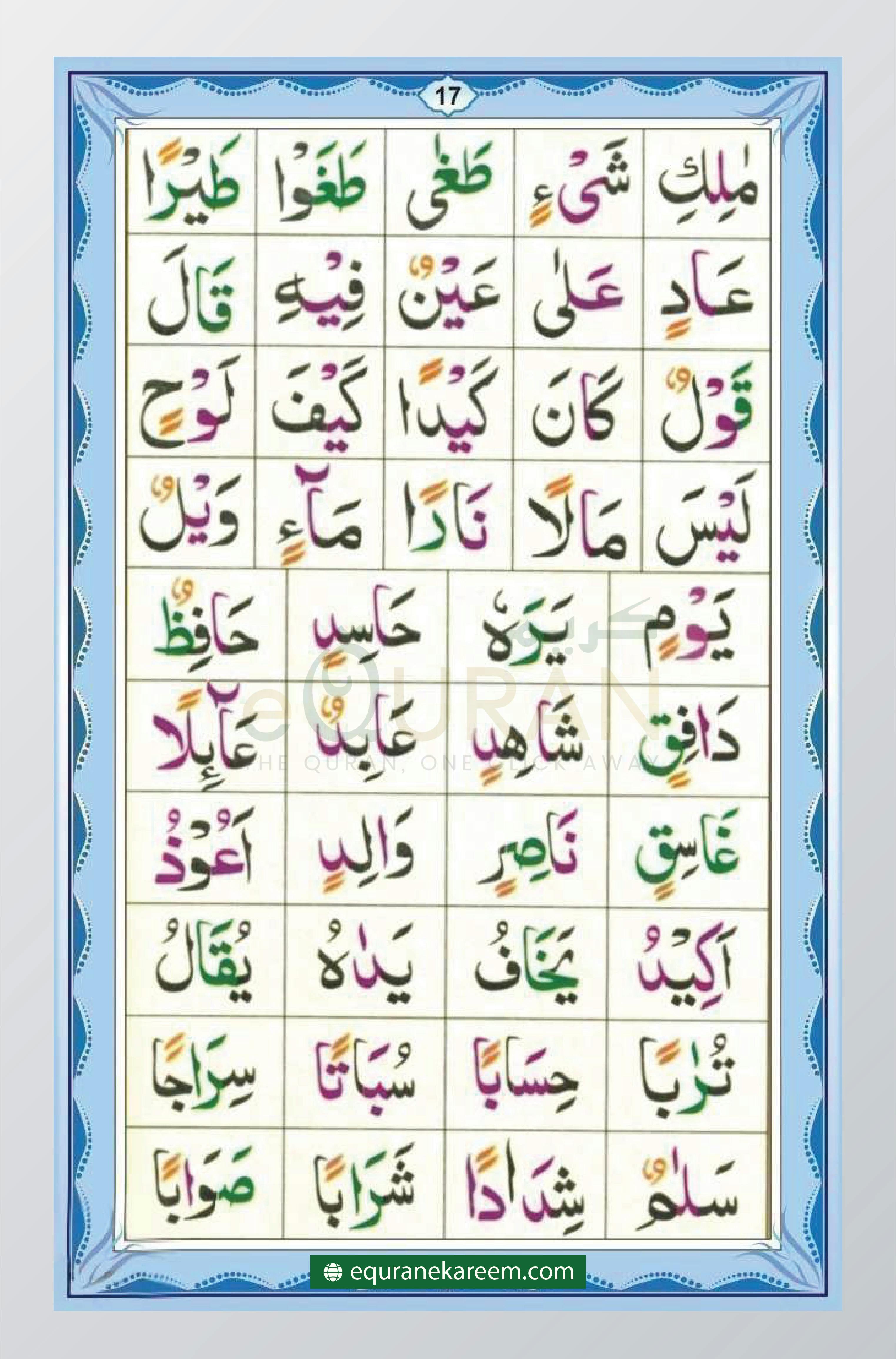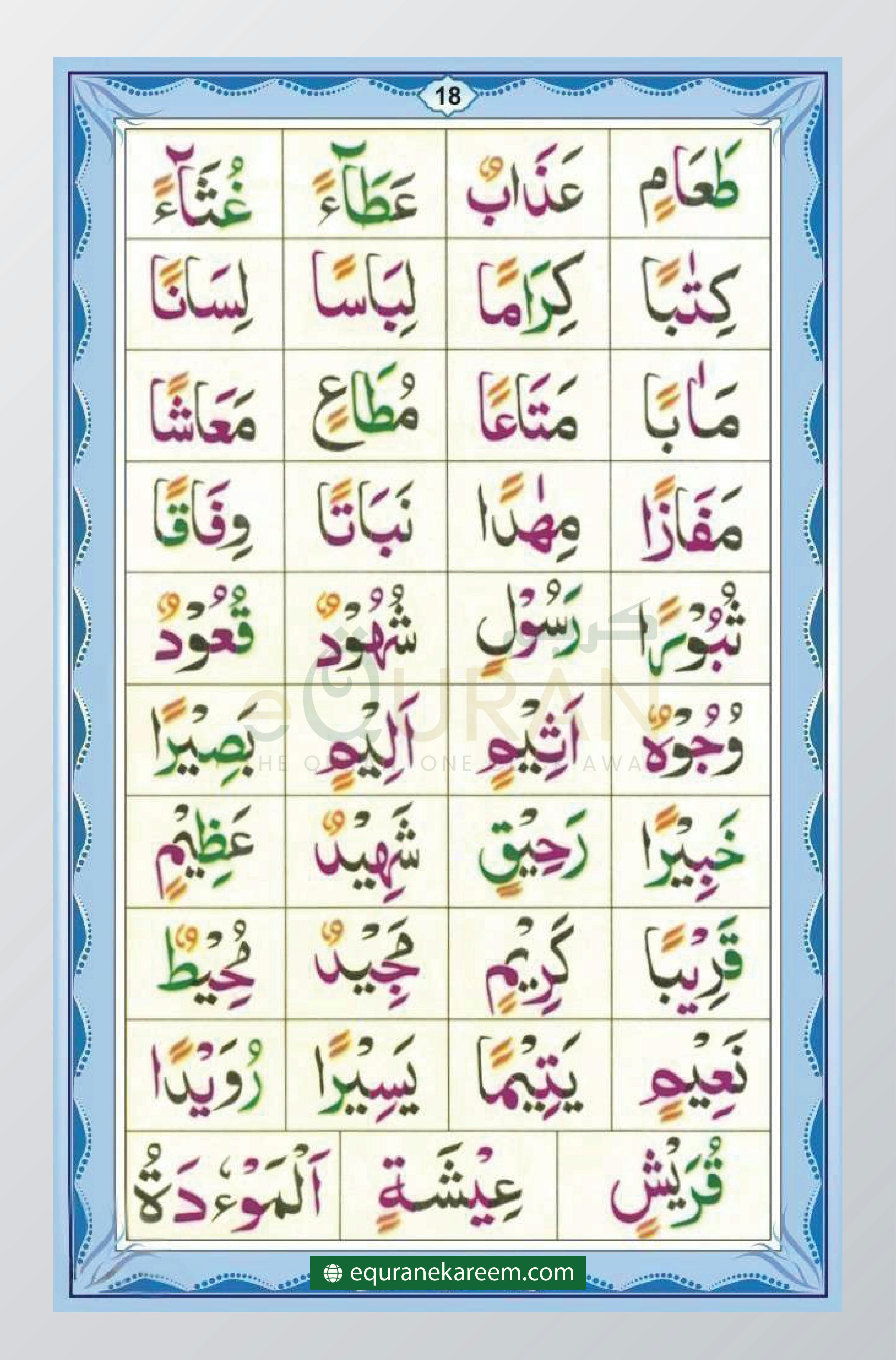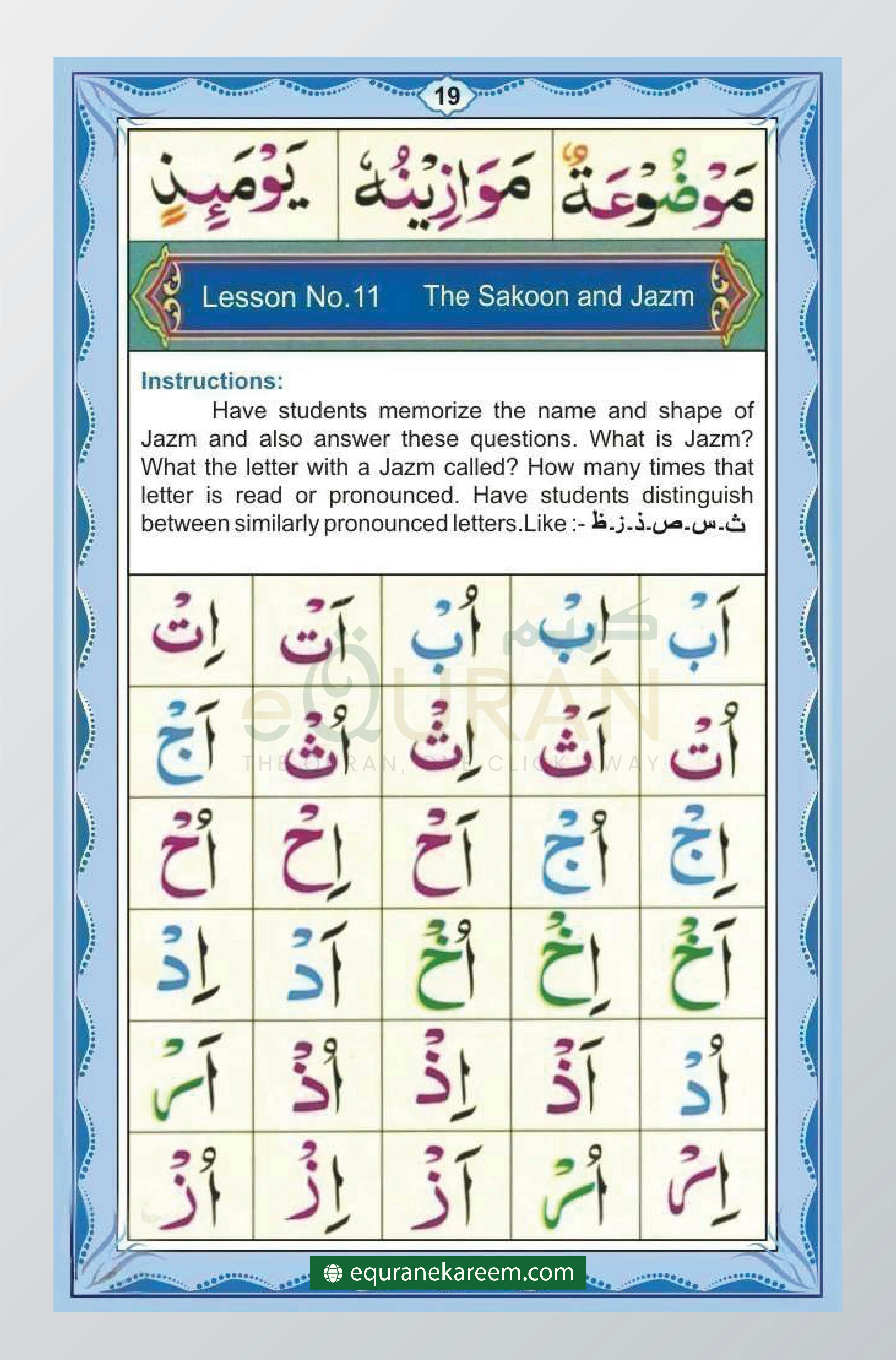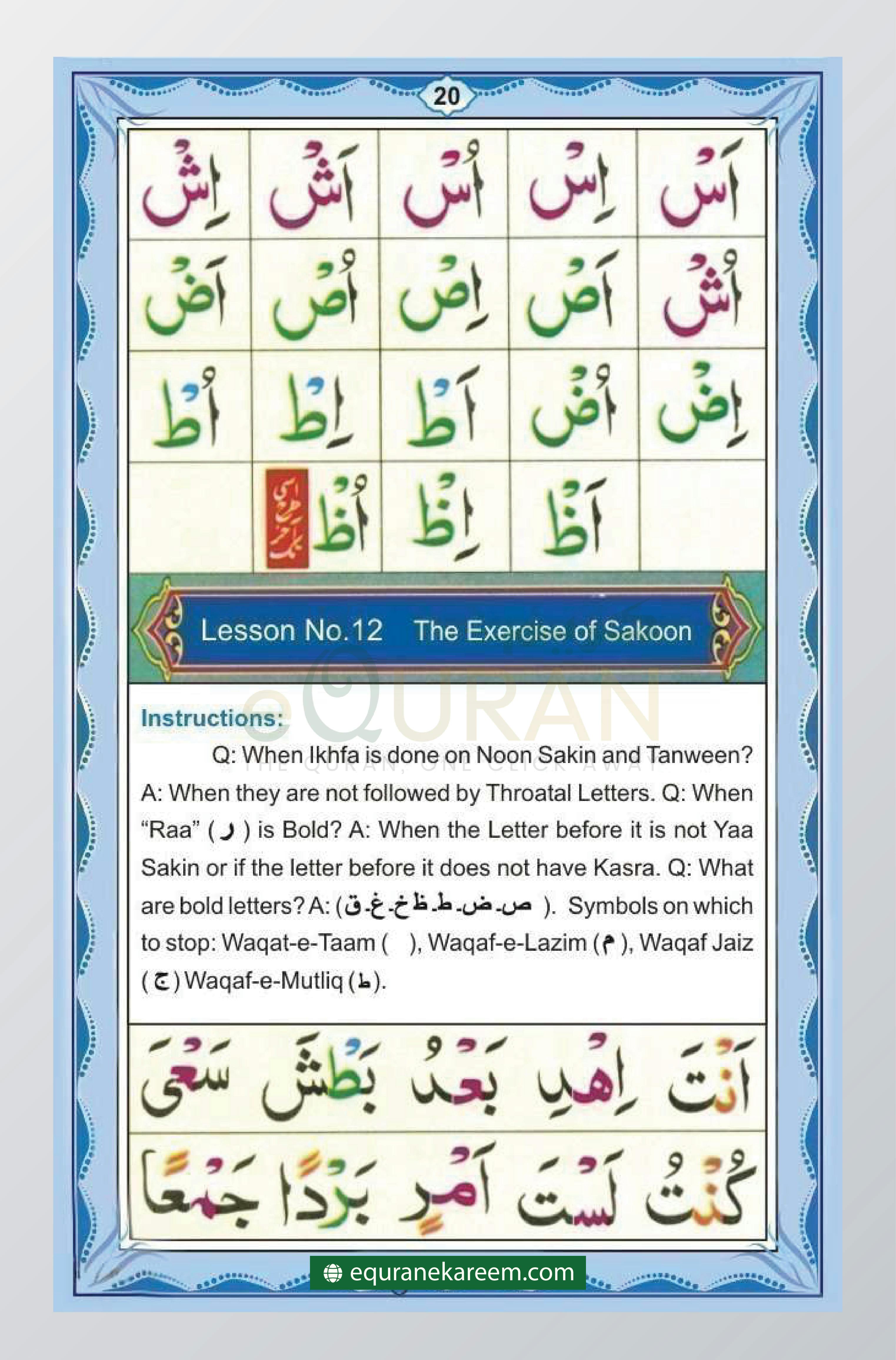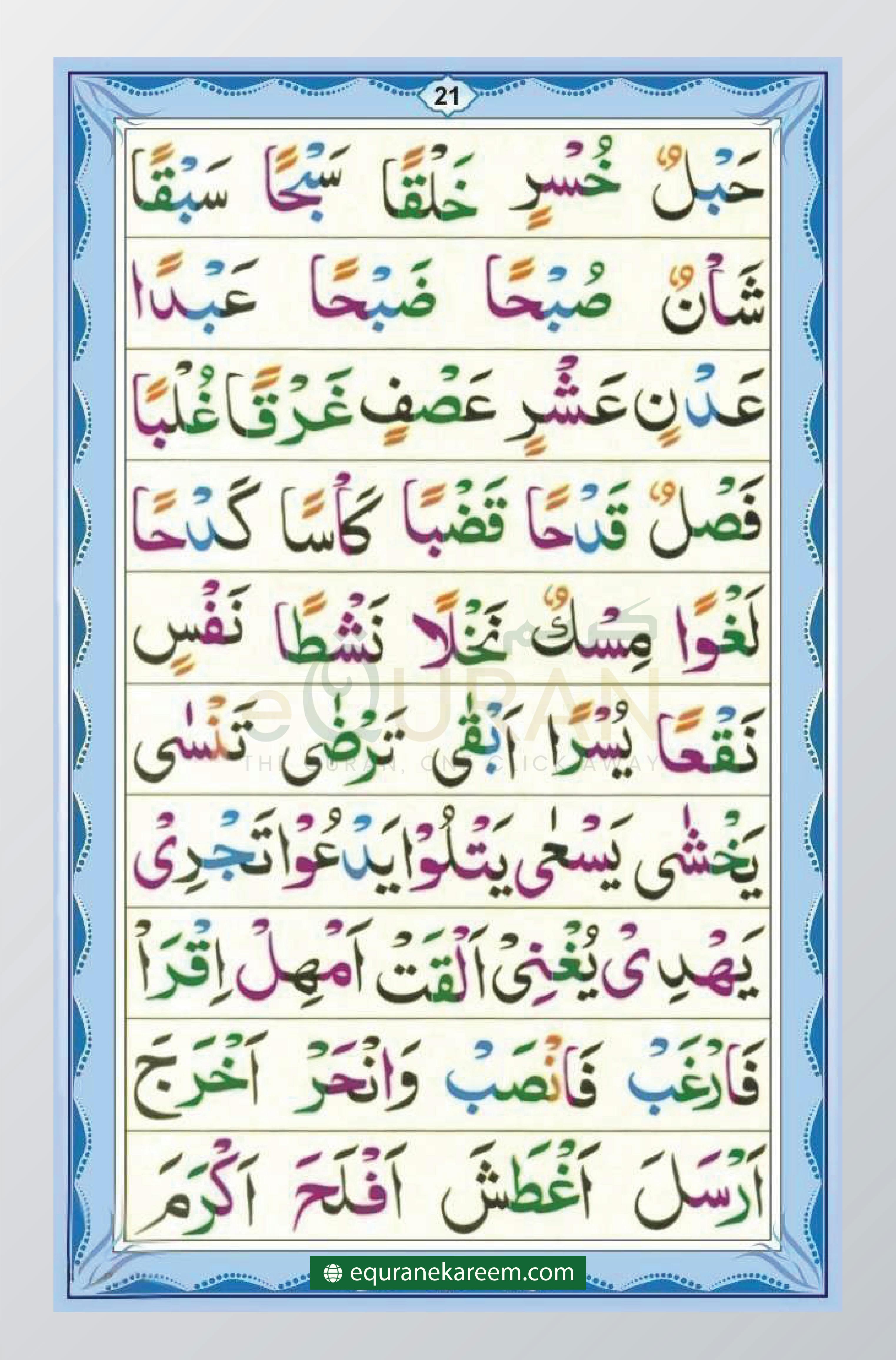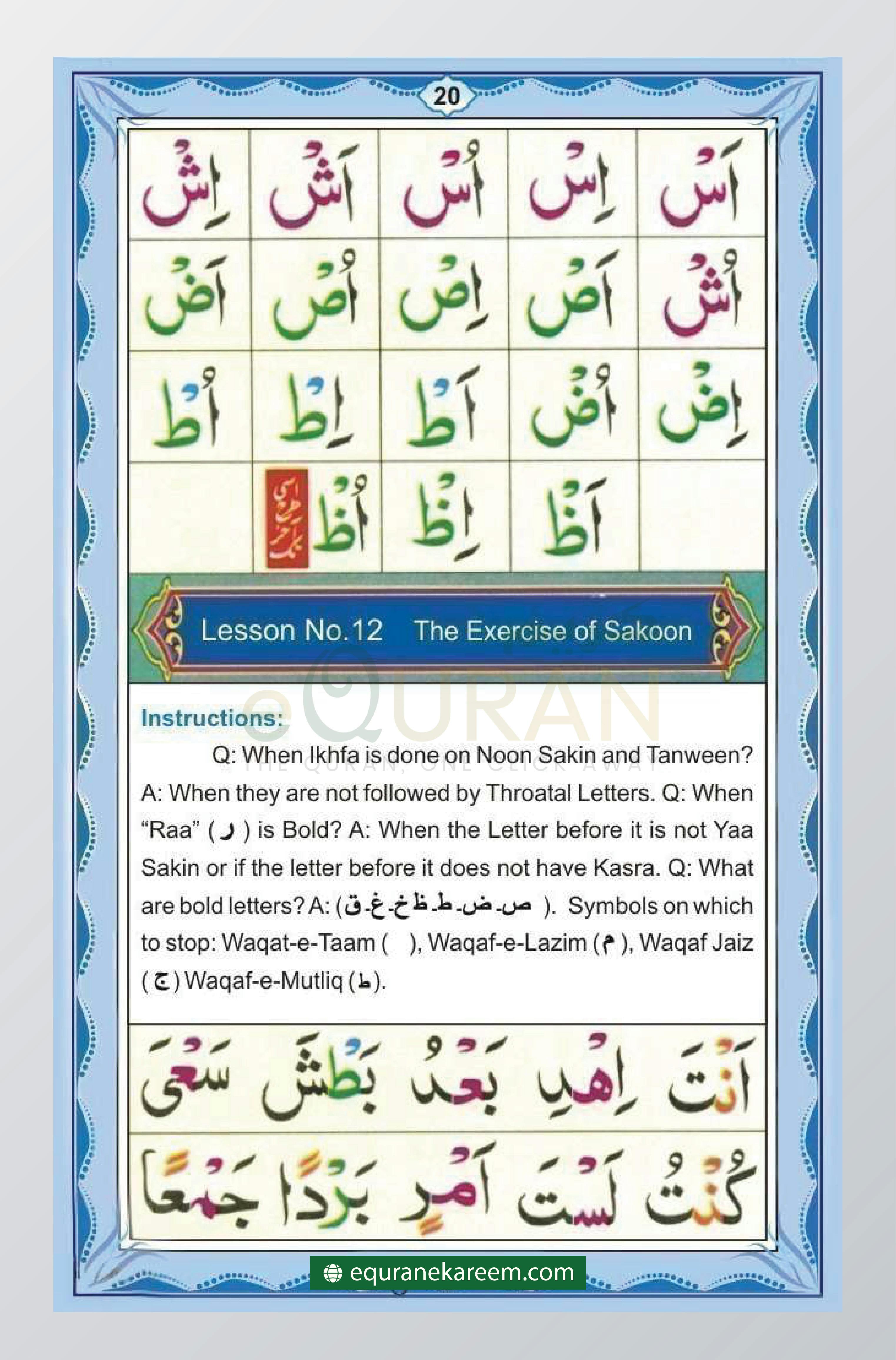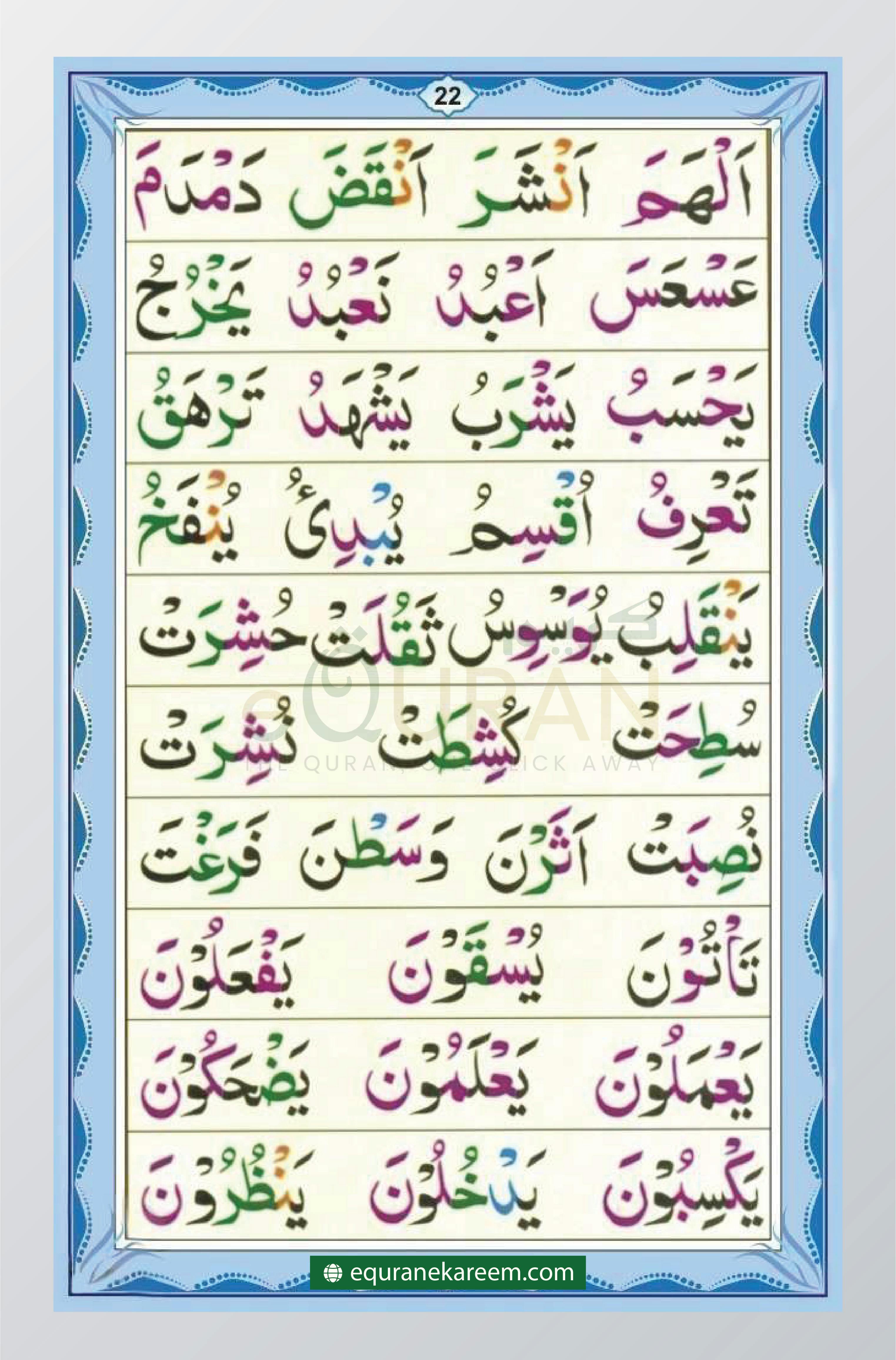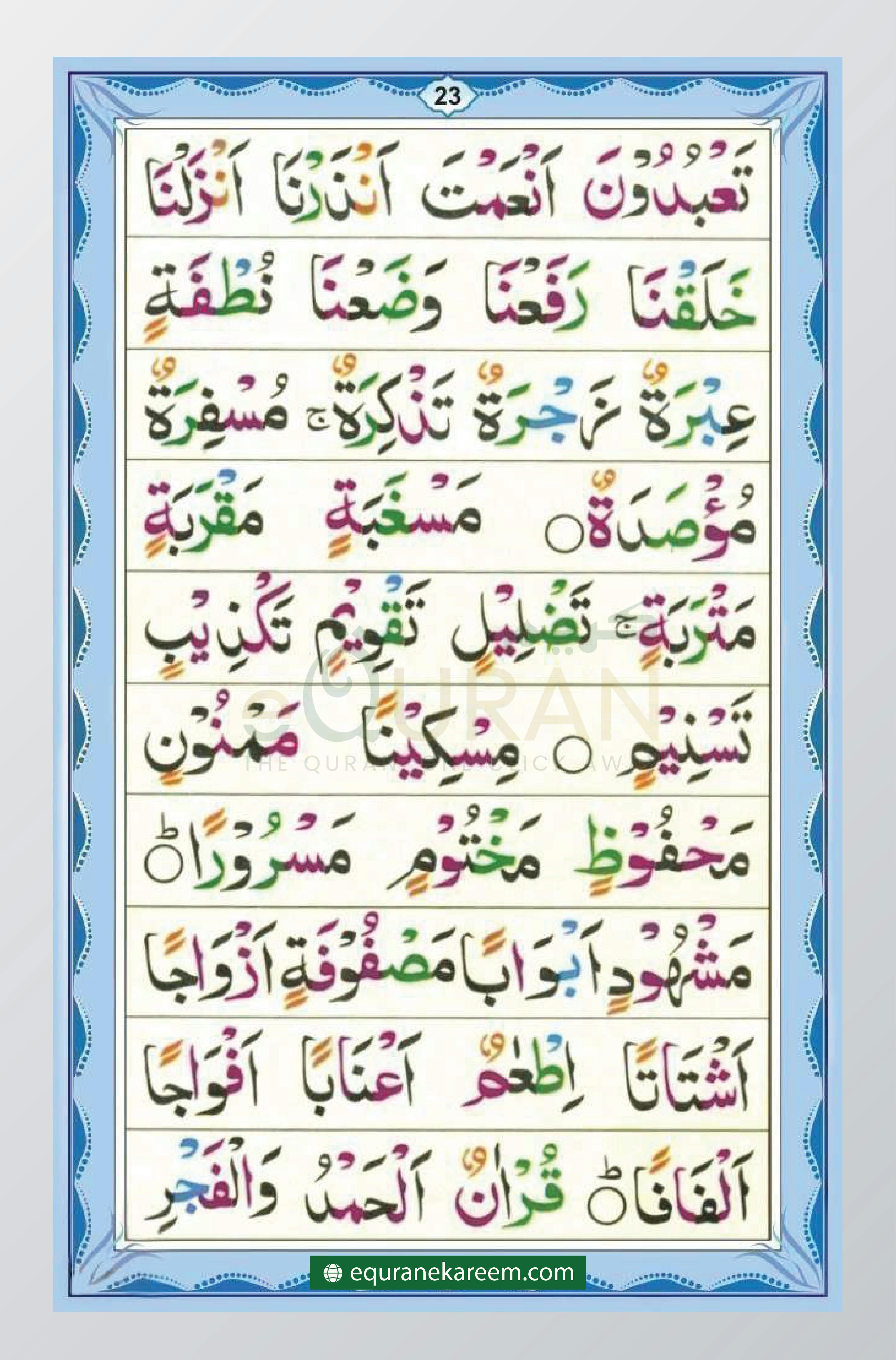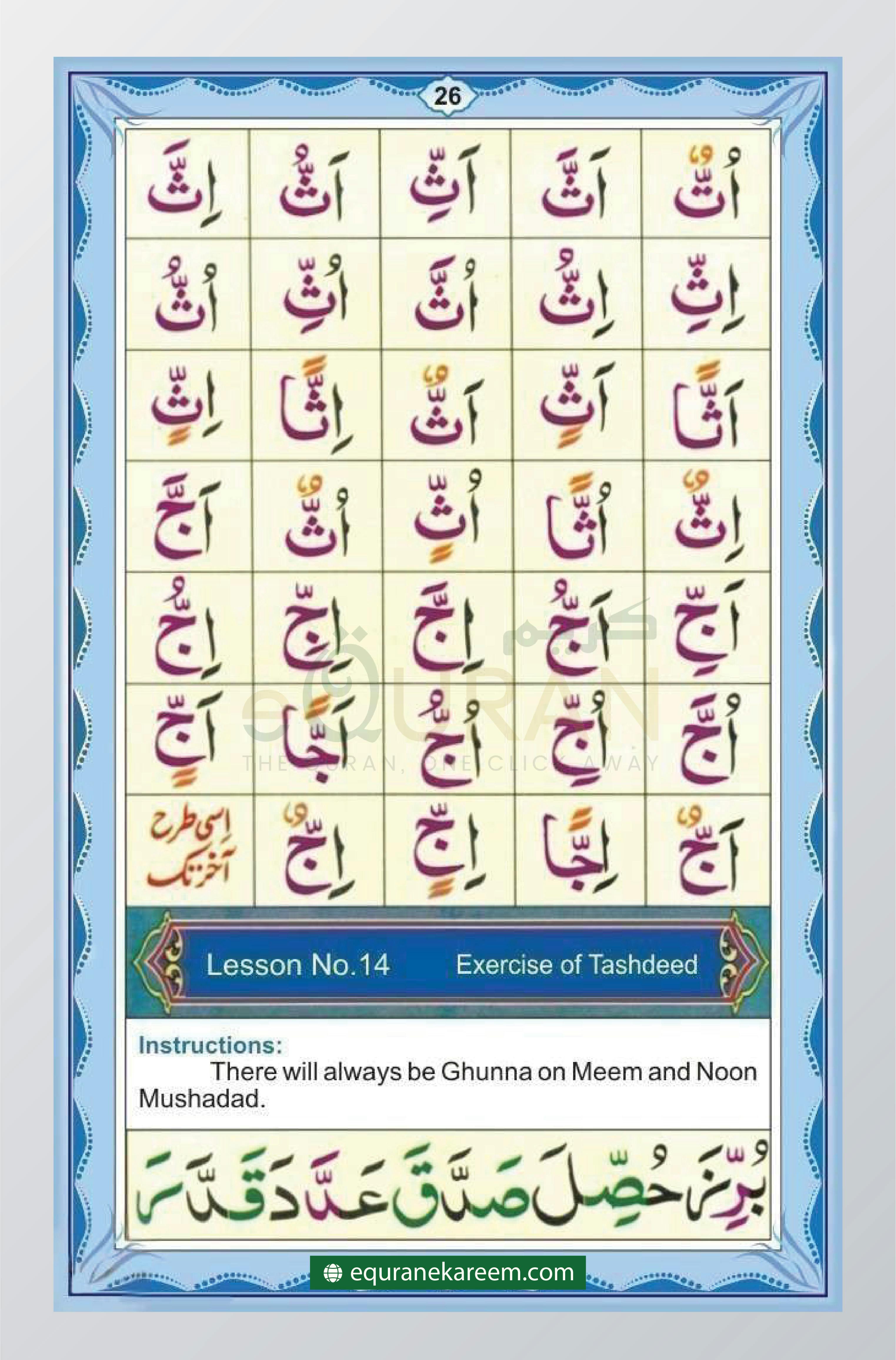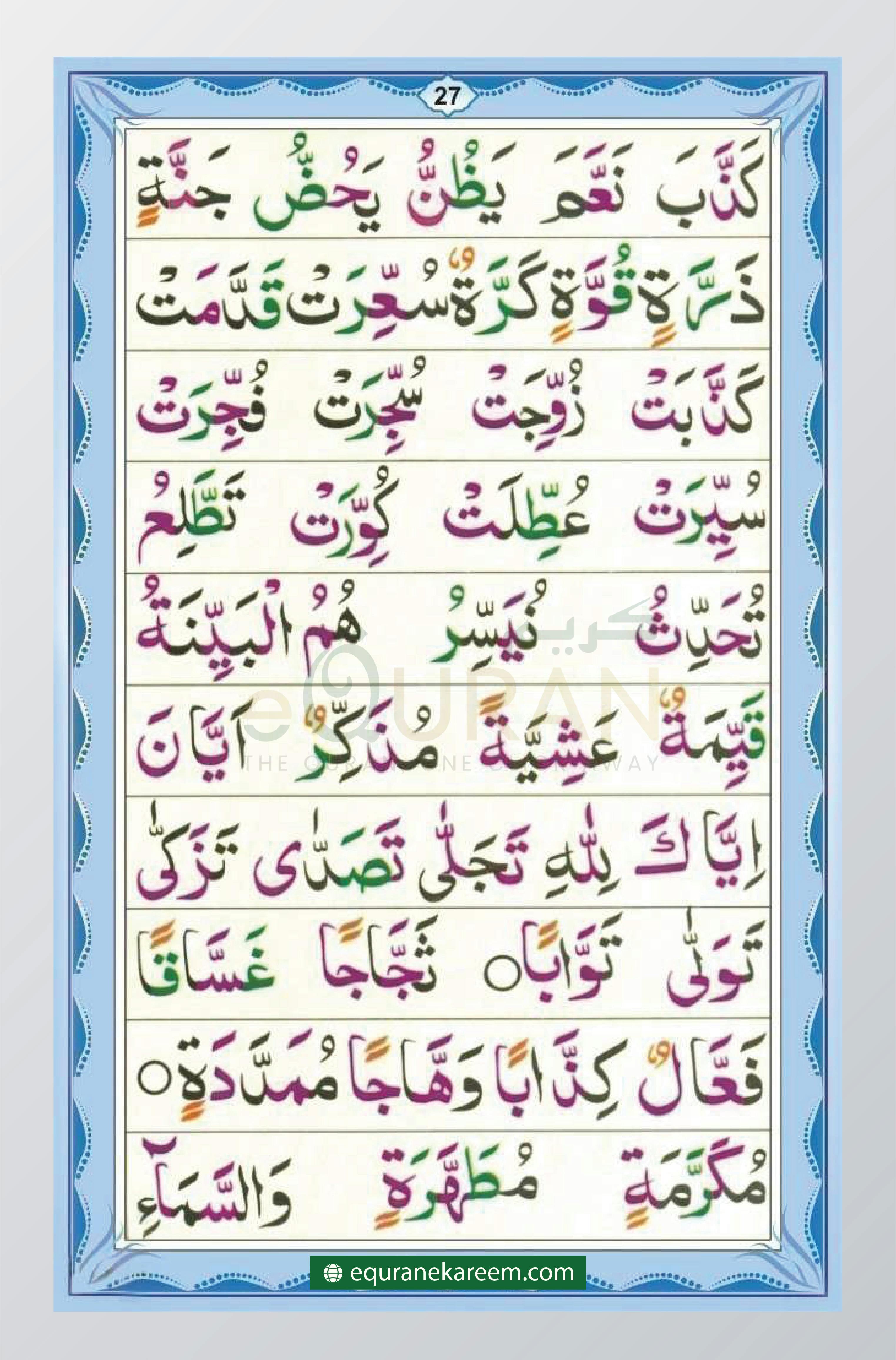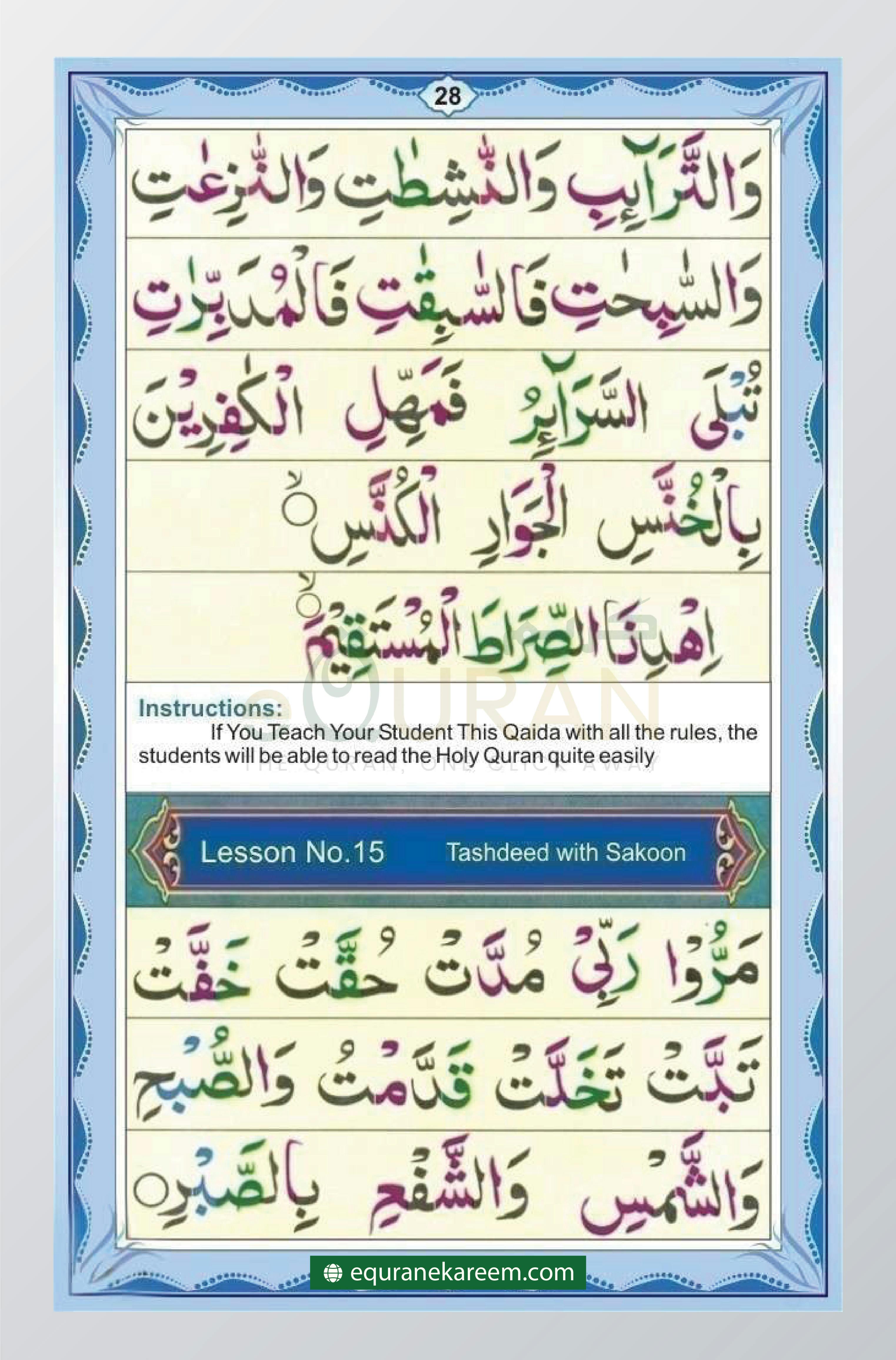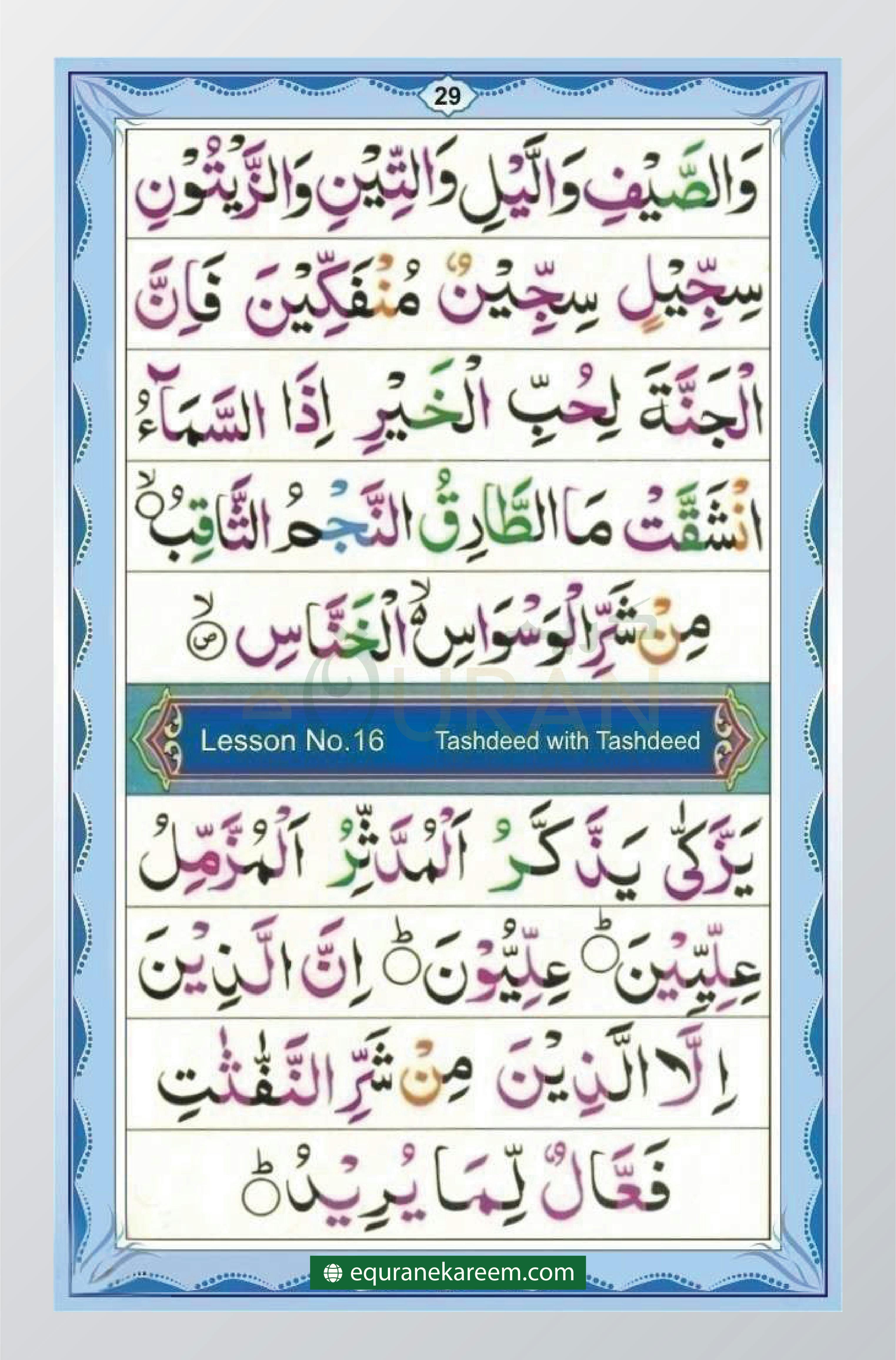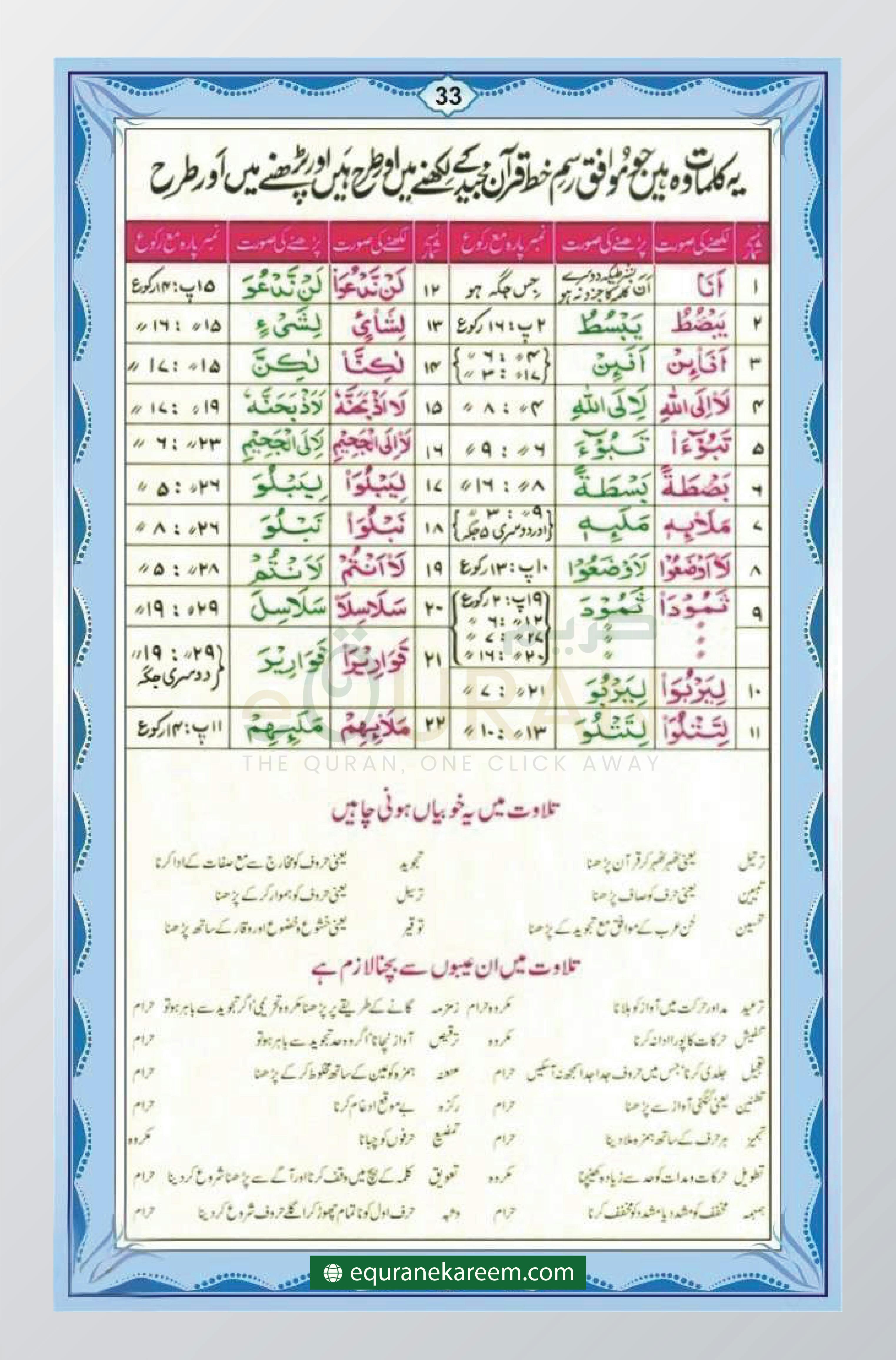
To learn the basic rules of reading the Quran, Noorani Qaida for kids is the first step to be taken for beginners. The one who reads the Quran should know the primary regulations of reading the Quran.
Learning this Qaida has been recommended and found efficient by most of the Quran teachers
What is Norani Qaida
Norani Qaida is a short book used to teach the fundamentals of basic Arabic letters and Arabic language. All the words in this Qurani Qaida are taken from the Quran and it contains all the principles of Arabic pronunciation.
Noorani Qaida book begins with single letters (haroof e Mufradat) and then moves on to joining them (murakkab haroof).
Inthelate19thcentury afamousscholar Sheikh Noor Muhammad Haqqani introduced this method and it is also named after him. Since then this technique of learning is being used widely.
Why is it Compulsory To Learn Noorani Qaida For Kids
For non-Arab kids it is quite difficult to understand the Arabic language. Thus Noorani Qaida serves as a core learning opportunity for them to learn noorani qaida with tajweed.
Kids get to learn the Arabic accent, the science of formation of letters, words and sentences in this arabic noorani Qaida.
This Qaida Provides a solid foundation for beginners to read the Quran and do Arabic letters practice while understanding its meaning to the fullest. With the completion of the noorani Qaida course you are able to read any Arabic text and the Quran smoothly and fluently.
We have formulated and organized a complete Noorani Qaida for you to learn it step-by-step
Lesson No 1 The Alphabets (Haroof e Mufradat)
Alphabets are the building blocks of any language. Focus on Arabic alphabet learning as much as you can. It plays an important role in laying the foundation for learning the Quran.
Noorani Qaida Lesson 1-A
In 1st class of noorani qaida lesson 1 you will learn lesson from alif baa taa(ا٬ب٬ت) to saad zuad (ص٬ض)
Noorani Qaida Lesson 1-B
In 2nd class of noorani qaida lesson 1 you will learn lesson from tau zua (ط٬ظ) to Yaa (ي)
Lesson No 2 Joint Letters (Murakkab Haroof)
Murakkab means to combine or to put something together. Murakkab Haroof are the letters when joined together form words.
Lesson No 3 The Muqattaat Letters (Haroof e Muqattaat)
These letters are written as a single word but each word is pronounced separately. These 14 unique Haroof e Muqattaat are present at the start of 29 Surahs of the Quran.
Lesson No 4 The Movements (Harakat)
The Arabic language has no words specified for vowels but there are some special symbols used instead of vowels known as Harakat or movements.
The top three harakat are Fatha ( ً ) Damma ( ٌ ) and Kasra ( ٍ).
Lesson No 5 The Tanween
Tanween is a sign added to the end of the word to make it a double vowel. It sounds like “N” or “ن” but not written like that.
Lesson No 6 The Tanween And Movement (Harakat)
Students need to connect letters and practice in this lesson having tanween and movement in a word. It is one of the most important rules to be learned before going forward
Lesson no 7 Standing Fatha, Standing Kasra and Standing Dhuma
Standing fatha, kasrah and dhuma are stretched a second longer than short vowels in Arabic language.
- A standing fatha is upright line on top of the letter
- A standing kasrah is upright line drawn on bottom of the letter
Lesson No 8 The Maddoleen (Haroof e Madda)
Haroof e Madda are alif (ا), ya (ي) and waw (و). If
- There is Fathah before alif it is called Alif-Maddah
- There is Dammah before waw sakin it is called Waw-Maddah
- There is Kasrah before Ya it is called Ya-Maddah
. These words must be prolonged for one to two seconds
Lesson No 9 Exercise of Movement: Standing Fatha Damma Kasra and Madoleen or Tanween
The purpose of this lesson is the practice of different combinations made by movement: standing fatha damma kasra and Madoleen or Tanween.
Lesson No 10 The Sakoon and Jazm
Sukoon and Jazm have identical symbols and they both indicate the absence of arabic language vowels. In Arabic language the symbol of sakoon or jazm is (ــْـ). It is present above the letter and the letter upon which it is written is called sakin (سَاكِنْ).
Lesson No 11 The Exercise of Sakoon
This exercise includes identification practice of bold letters upon which we need to stop: Waqf e Taam , Waqf e lazimمـ, waqf e jaiz ج and waqf e mutaliq ط. We also learn when Ikhfa (covering the sound of a letter) is done at noon and tanween
Lesson No 12 The Tashdeed (شَدَّة)
The sign( ـّ ) above the alphabet is known as Shadda or tashdeed and it needs to be read with emphasis. In Arabic tashdeed is like the same letter twice where the first letter will be sakoon and second word will be Fatha Damma or Kasra.
Lesson No 13 Exercise Of Tashdeed
Now when you are done with the understanding of Tashdeed you need to exercise it with different variations.
Lesson No 14 Tashdeed with Sukoon
Tashdeed words are used many times in the Quran. If a tashdeed sign appears on the letter then the letter with the sign is read twice, first time with sukoon and second time with its harkaat
Lesson No 15 Tashdeed with Tashdeed
The doubling of emphasis or stress on certain words is learnt in this lesson. These types of words contain back to back tashdeed.
Lesson No 16 Tashdeed with Haroof e Maddah
This lesson appears to be one of the most important lessons you have learnt so far. You have to connect words and in the meantime you have to read tashdeed with haroof e maddah. In simple words you have to connect and prolong words as well. Whenever Tashdeed sign appears Noon and Meem, We will practice Ghunna
Lesson No 17 Ending of Rules
This lesson comprises a comprehensive revision and practice exercise to solidify your whole learning process. It brings proficiency and accuracy in your pronunciation and reading haroof e tahaji.
Conclusion
Teaching the nurani kayda to kids is a crucial step in their understanding of the Quran. Colorful versions of Qaida made them more attractive for kids to learn it. With Consistency and discipline, learning Noorani Qaida becomes effortless.
Starting with the basic Arabic words and advancing to complex words, Qaida provides a systematic approach to learning. Adding learning of Qaida in your daily routine constructs a solid foundation for a lifetime engagement with the Holy Quran.
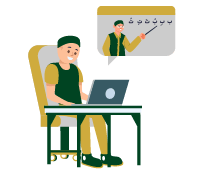
Get the Best Quranic Education – with eQuraneKareem
Learn Noorani Qaidah with our online Quran tutors who teach, listen, and monitor your progress. Enroll in our interactive live classes with audio/visual exercises to get the best learning experience.

